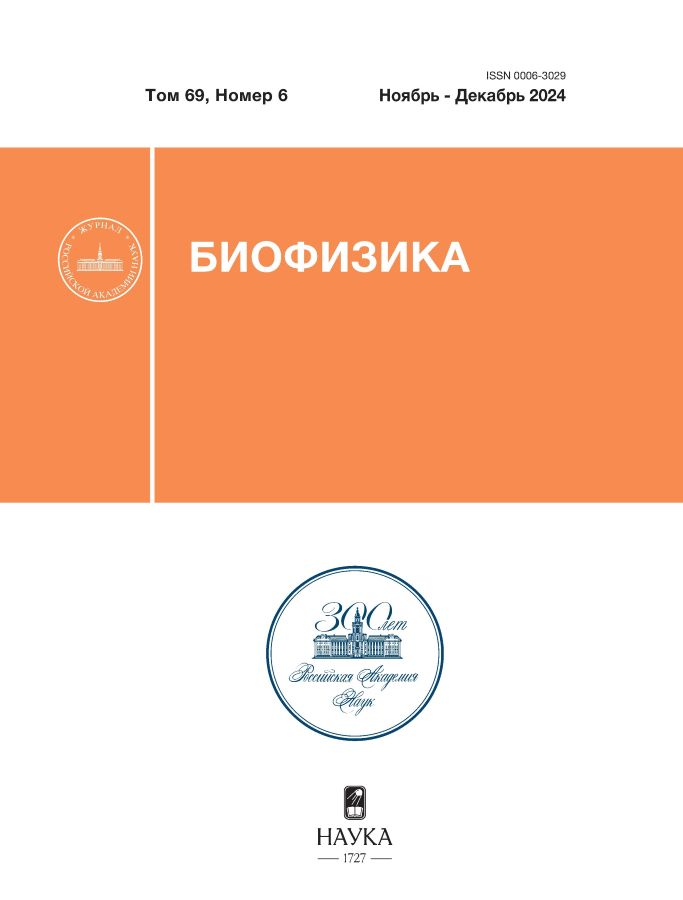Polysaccharide from Solanum tuberosum L. as a Potential Antiulcer Drug
- Авторлар: Generalova L.V1, Kritskaya K.A2, Laryushkin D.P2, Generalov E.A3
-
Мекемелер:
- The Patrice Lumumba Peoples' Friendship University of Russia
- Institute of Cell Biophysics, Russian Academy of Sciences
- M.V. Lomonosov Moscow State University
- Шығарылым: Том 69, № 6 (2024)
- Беттер: 1376-1381
- Бөлім: Medical biophysics
- URL: https://kld-journal.fedlab.ru/0006-3029/article/view/676189
- DOI: https://doi.org/10.31857/S0006302924060229
- EDN: https://elibrary.ru/NJKCQE
- ID: 676189
Дәйексөз келтіру
Аннотация
A study was conducted to investigate the antiulcer activity of the polysaccharide from Solanum tuberosum L. in chronic and acute ulcer models proposed by Selye and Okabe. The antiulcer effect was assessed by determining and comparing the ulcer index in the treated animals and a control. The groups of treated animals that received a daily administration of polysaccharide for 7 and 3 days showed a significant decrease in the ulcer index when compared with that of the control group of animals given physiological saline. In presence of polysaccharide, the incidence of pathological conditions (hyperemia, edema, and internal bleeding) decreased substantially regardless of the dose. This provides the conclusion that the polysaccharide may effectively prevent changes associated with the development of ulcerative colitis in “August” line rats in the ulcer model adduced by Selye. According to Okabe, polysaccharide dose (0.5 mg/animal) even in a single administration led to significant and in some cases almost complete healing of ulcers.
Авторлар туралы
L. Generalova
The Patrice Lumumba Peoples' Friendship University of RussiaMoscow, Russia
K. Kritskaya
Institute of Cell Biophysics, Russian Academy of SciencesPushchino, Russia
D. Laryushkin
Institute of Cell Biophysics, Russian Academy of SciencesPushchino, Russia
E. Generalov
M.V. Lomonosov Moscow State University
Email: generals1179@gmail.com
Moscow, Russia
Әдебиет тізімі
- Abbasi-Kangevari M., Ahmadi N., Fattahi N. Rezaei N., Malekpour M. R., Ghamari S. H., Moghaddam S. S., Azadnajafabad S., Esfahani Z., Kolahi A. A., Roshani S., Rezazadeh-Khadem S., Gorgani F., Naleini S. N., Naderimagham S., Larijani B., and Farzadfar F. Quality of care of peptic ulcer disease worldwide: A systematic analysis for the global burden of disease study 1990-2019. PLoS One, 17 (8), (2022). doi: 10.1371/journal.pone.0271284
- Mohammed A. S. A., Naveed M., and Jost N. Polysaccharides; classification, chemical properties, and future perspective applications in fields of pharmacology and biological medicine (a review of current applications and upcoming potentialities). J. Polymers Environ., 29 (8), 2359-2371 (2021). doi: 10.1007/s10924-021-02052-2
- Генералов Е. А. Структура и радиопротекторные свойства нетоксичного полисахарида из Heliantnus Tuberosus L. Биофизика, 59 (3), 439-445 (2014).
- Wang W., Xue C., Mao X. Radioprotective effects and mechanisms of animal, plant and microbial polysaccharides. Int. J. Biol. Macromolecules, 153, 373-384 (2020). doi: 10.1016/j.ijbiomac.2020.02.203
- Генералов Е. А. Водно-растворимый полисахарид из Helianthus tuberosus L.: радиозащитная, колониестимулирующая и иммуномодулирующая активность. Биофизика, 60 (1), 73-79 (2015).
- Generalov E., Dyukina A., Shemyakov A., Mytsin G., Agapov A., Kritskaya K., Kosenkov A., Gaidin S., Maiorov S., Generalova L., and Laryushkin D. Polysaccharide from Helianthus tuberosus L. as a potential radioprotector. Biochem. Biophys. Res. Commun., 733, 150442 (2024). doi: 10.1016/j.bbrc.2024.150442
- Jin H., Li M., Tian F., Yu F., and Zhao W. An overview of antitumour activity of polysaccharides. Molecules, 27 (22), 8083 (2022). doi: 10.3390/molecules27228083
- Генералов Е. А., Левашова Н. Т., Сидорова А. Э., Чумаков П. М. и Яковенко Л. В. Автоволновая модель бифуркационного поведения трансформированных клеток под действием полисахарида. Биофизика, 62 (5), 660-668 (2017).
- Wang X.-Y., Yin J.-Y., Hu J.-L., Nie S.-P., and Xie M.-Y. Gastroprotective polysaccharide from natural sources: Review on structure, mechanism, and structure-activity relationship. Food Front., 3, 560-591 (2022). doi: 10.1002/fft2.172
- Генералов Е. А. Спектральные характеристики и моносахаридный состав противовирусного полисахаридного индуктора интерферона из Helianthus Tuberosus L. Биофизика, 60 (1), 65-72 (2015).
- Генералов Е. А., Симоненко Е. Ю., Кульченко Н. Г. и Яковенко Л. В. Молекулярные основы биологической активности полисахаридов при ассоциированных с COVID-19 состояниях. Биомед. химия, 68 (5), 403-418 (2022). doi: 10.18097/PBMC20226806403
- Generalova L. V., Laryushkin D. P., Leneva I. A., Ivanina A. V., Trunova G. V., Dolinnyi S. V., and Generalov E. A. Evaluation of the polysaccharide “immeran” activity in syrian hamsters’ model of SARS-CoV-2. Viruses, 16, 423 (2024). doi: 10.3390/v16030423
- Claus-Desbonnet H., Nikly E., Nalbantova V., Karcheva-Bahchevanska D., Ivanova S., Pierre G., Benbassat N., Katsarov P., Michaud P., Lukova P., and Delattre C. Polysaccharides and their derivatives as potential antiviral molecules. Viruses, 14 (2), 426 (2022). doi: 10.3390/v14020426
- Генералов Е. А. и Яковенко Л. В. Состав и митогенная активность полисахарида из Solanum tuberosum L. Биофизика, 68 (5), 856-862 (2023). doi: 10.1134/S0006350923050093
- Vlachojannis J. E., Cameron M., and Chrubasik S. Medicinal use of potato-derived products: a systematic review. Phytotherapy Res., 24, 159-162 (2010). doi: 10.1002/ptr.2829
- Генералов Е. А. Влияние полисахаридного препарата «Иммеран» на течение язвенной болезни желудка и двенадцатиперстной кишки. Актуальные вопросы биологической физики и химии, 4 (1), 85-89 (2019).
- Tsukimi Y. and Okabe S. Effect of anterior unilateral vagotomy on healing of kissing gastric ulcers induced in rats. Jap. J. Pharmacol., 66, 105-114 (1994).
- Yoo C. Y., Son H. U., Kim S. K., Kim S. O., and Lee S.H. Improved image analysis for measuring gastric ulcer index in animal models and clinical diagnostic data. Diagnostics (Basel), 12(5), 1233 (2022). doi: 10.3390/diagnostics12051233
- Schultz G. S., Chin G. A., Moldawer L., and Diegelmann R. F. Principles of wound healing. In: Mechanisms of vascular disease: A reference book for vascular specialists. Ed. by R. Fitridge and M. Thompson (University of Adelaide Press, Adelaide, Australia, 2011). Available from: https://www.ncbi.nlm.nih.gov/books/NBK534261/
- Guillen J. FELASA guidelines and recommendations. J. Am. Association for Laboratory Animal Sci., 51, 311-321 (2012).
- Directive 2010/63/EU of the European Parliament and of the Council on the protection of animals used for scientific purposes. FAOLEX n.d. https://www.fao.org/faolex/results/details/ru/c/LEX-FAOC098296/ (accessed August 20, 2024).
Қосымша файлдар









